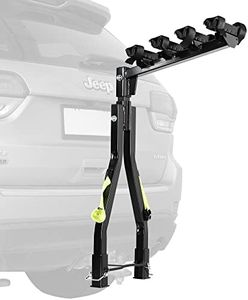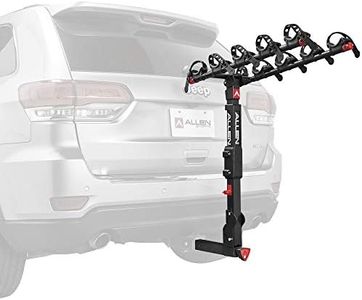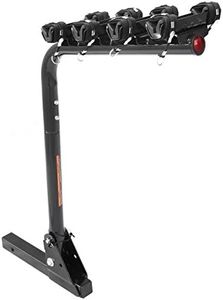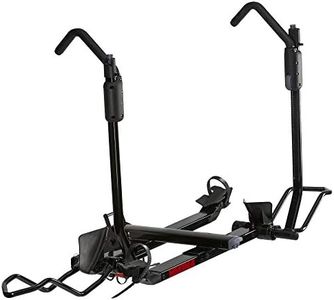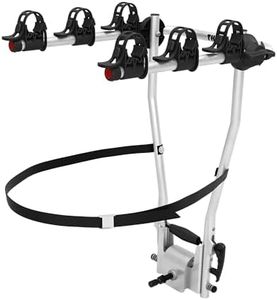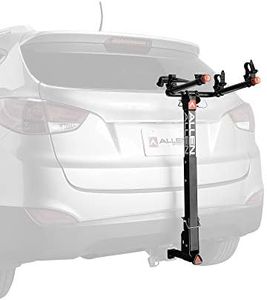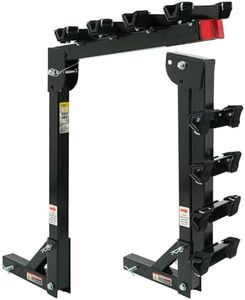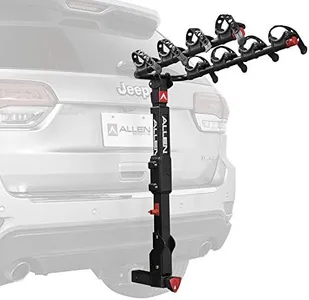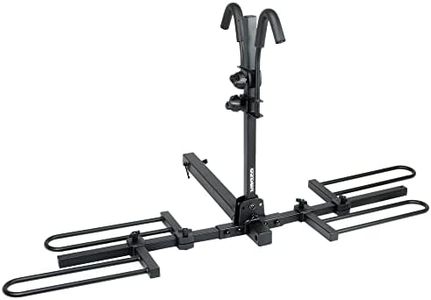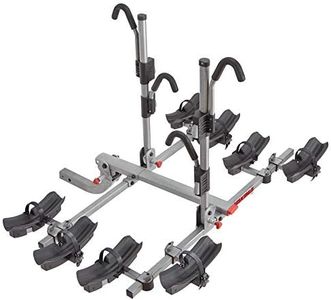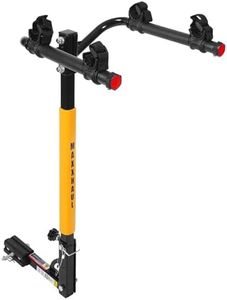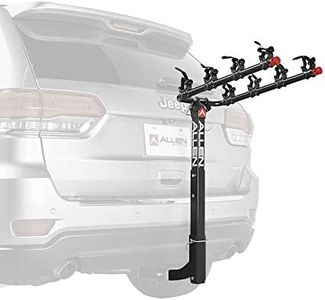We Use CookiesWe use cookies to enhance the security, performance,
functionality and for analytical and promotional activities. By continuing to browse this site you
are agreeing to our privacy policy
10 Best Bike Hitch Racks
From leading brands and best sellers available on the web.Buying Guide for the Best Bike Hitch Racks
Choosing the right bike hitch rack can make transporting your bicycles safe, convenient, and stress-free. There are many models on the market, but picking the one best for you starts with knowing your needs: how many bikes you want to carry, the type of vehicle you have, how often you’ll use it, and the kinds of bikes you own. Understanding key features will help you select a rack that's both secure and easy to use, ensuring your bikes stay safe on the road and that loading and unloading are as hassle-free as possible.Bike CapacityThis refers to how many bicycles the rack can hold at one time. It's one of the most important decisions because having too few slots limits flexibility, while having too many can be bulky. Most racks accommodate between one and five bikes. If you frequently travel alone or with one other person, a 2-bike rack often suffices. Larger racks for three or more bikes are great for families or group trips, but make sure your vehicle can handle the added weight and size.
Rack Type (Platform vs. Hanging)This spec describes how bikes are supported. Platform racks hold the bikes by their wheels and often make loading quick and provide better protection for bike frames. Hanging racks suspend bikes by their frame, usually resulting in lighter-weight and less expensive racks, but they might not be ideal for unusual or delicate bike frames. Platform racks are often recommended for heavier, expensive, or non-standard bikes, while hanging racks can be better for basic or kid’s bikes.
Hitch Receiver Size CompatibilityHitch racks attach to receivers that come in different sizes, typically 1.25-inch or 2-inch openings. Matching your rack to your vehicle’s hitch is essential. 1.25-inch hitches are common on smaller vehicles and are suitable for lighter loads, while 2-inch hitches are found on bigger vehicles and support heavier or more numerous bikes. Check your vehicle’s hitch size and weight rating before picking a rack so you know it will fit and be safe.
Weight CapacityThis indicates the maximum weight the rack can safely hold, either per bike or overall. It’s especially crucial if you have heavier bikes such as e-bikes or mountain bikes. Racks may range from supporting around 30 pounds per bike up to 60 pounds or more. Add up the weights of the bikes you plan to carry and make sure the rack comfortably exceeds that total.
Ease of Installation and UseHow easily the rack installs and how simple it is to load and unload bikes plays a big part in your ongoing satisfaction. Some racks have tool-free installations and features like tilt mechanisms for trunk access even when bikes are loaded. If you often remove and reinstall your rack or need regular access to your trunk, look for user-friendly designs that suit your habits and strength.
Security FeaturesSecurity options like locking hitch pins and integrated cable locks help keep your bikes and rack safe from theft. The best racks have built-in or attachable security features. If you regularly leave bikes unattended, prioritize a rack with robust locking systems for both the rack-to-car connection and bike-to-rack connection.
Bike CompatibilityThis refers to the range of bike styles, frame sizes, and wheel sizes the rack can safely hold. Not all racks fit all bikes, especially with fat tires, small children’s bikes, or step-through frames. If you have specialty bikes, check that the rack’s holding arms, tray width, and straps or cradles can accommodate your bikes’ dimensions.

